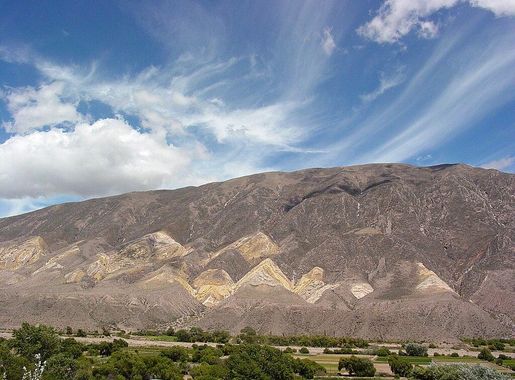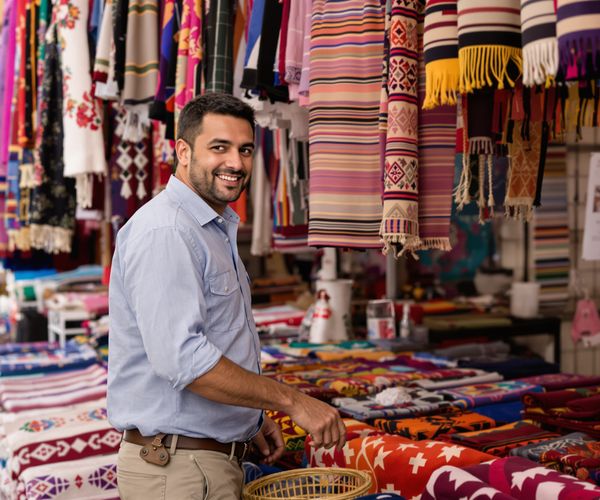
Salta: The Gem of the Andean Northwest
Discover Salta, Argentina: A city where colonial elegance meets Andean adventure, offering historic charm, vibrant culture, and breathtaking landscapes.
Nestled in the Lerma Valley and surrounded by the foothills of the Andes, Salta is a city that effortlessly combines natural beauty, colonial charm, and rich cultural heritage. Known as 'Salta la Linda' (Salta the Beautiful), this city captivates visitors with its stunning landscapes and vibrant local traditions. Strolling through Salta's historic center, you'll find well-preserved colonial architecture, such as the Cabildo and the San Francisco Church. The city's main square, Plaza 9 de Julio, is a hub of activity where you can enjoy a leisurely coffee while soaking in the local atmosphere. For a deeper dive into the region's history, visit the MAAM (Museum of High Altitude Archaeology), which houses the famous Inca mummies discovered atop the Llullaillaco volcano. The surrounding countryside offers some of the most breathtaking scenery in Argentina. Take a ride on the Tren a las Nubes (Train to the Clouds) for an unforgettable journey through the Andes, or venture out to the Calchaquí Valleys to explore picturesque villages, vineyards, and dramatic rock formations. Outdoor enthusiasts will find plenty of opportunities for hiking, horseback riding, and even paragliding in the nearby hills. Salta is also a gastronomic delight. The city's food scene is a delicious mix of traditional Andean flavors and Spanish influences. Be sure to try empanadas salteñas, tamales, and humitas, and wash it all down with a glass of Torrontés, a local white wine. In the evening, head to a peña, a traditional folk music venue, to experience the soulful sounds of Salta's folk music and dance.
Local tips in Salta
- Visit the MAAM museum early in the day to avoid crowds and fully appreciate the exhibits.
- Take a guided tour of the Tren a las Nubes ride to learn about the history and engineering behind this marvel.
- Explore the local markets, such as Mercado San Miguel, for authentic souvenirs and local crafts.
- Wear comfortable shoes for exploring the city as many streets are cobblestone and require good footing.
- Book your peña experience in advance, especially on weekends, as these venues can get quite busy.
Salta: The Gem of the Andean Northwest
Nestled in the Lerma Valley and surrounded by the foothills of the Andes, Salta is a city that effortlessly combines natural beauty, colonial charm, and rich cultural heritage. Known as 'Salta la Linda' (Salta the Beautiful), this city captivates visitors with its stunning landscapes and vibrant local traditions. Strolling through Salta's historic center, you'll find well-preserved colonial architecture, such as the Cabildo and the San Francisco Church. The city's main square, Plaza 9 de Julio, is a hub of activity where you can enjoy a leisurely coffee while soaking in the local atmosphere. For a deeper dive into the region's history, visit the MAAM (Museum of High Altitude Archaeology), which houses the famous Inca mummies discovered atop the Llullaillaco volcano. The surrounding countryside offers some of the most breathtaking scenery in Argentina. Take a ride on the Tren a las Nubes (Train to the Clouds) for an unforgettable journey through the Andes, or venture out to the Calchaquí Valleys to explore picturesque villages, vineyards, and dramatic rock formations. Outdoor enthusiasts will find plenty of opportunities for hiking, horseback riding, and even paragliding in the nearby hills. Salta is also a gastronomic delight. The city's food scene is a delicious mix of traditional Andean flavors and Spanish influences. Be sure to try empanadas salteñas, tamales, and humitas, and wash it all down with a glass of Torrontés, a local white wine. In the evening, head to a peña, a traditional folk music venue, to experience the soulful sounds of Salta's folk music and dance.
When is the best time to go to Salta?
Iconic landmarks you can’t miss
July 9th Square
Experience the vibrant atmosphere and historical charm of July 9th Square, the heart of Salta, where culture and community come alive.
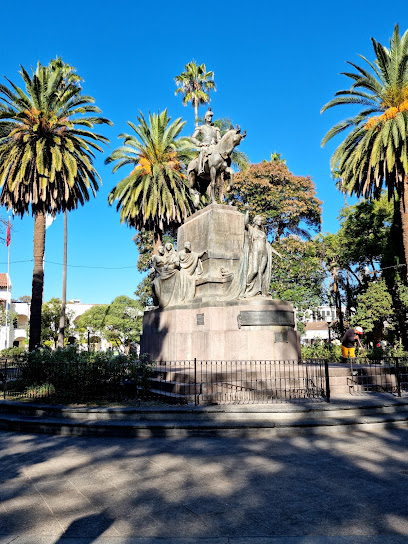
San Bernardo's Hill
Discover the breathtaking beauty of San Bernardo's Hill in Salta, Argentina, with its stunning views, hiking trails, and rich cultural heritage.
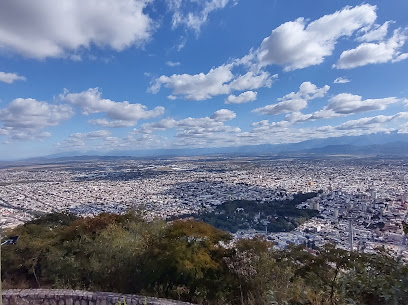
San Martin Park
Discover the serene beauty of San Martin Park, a lush green haven in Salta, perfect for relaxation, picnics, and scenic strolls amidst nature.
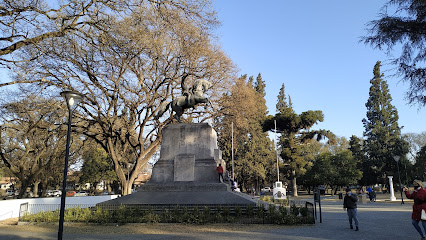
Mercado Municipal San Miguel
Experience the heart of Salta at Mercado Municipal San Miguel, a vibrant market showcasing local culture, delicious food, and unique crafts.
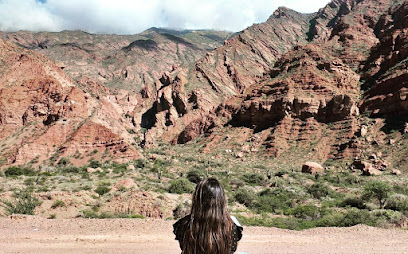
Monument General Martin Miguel de Guemes
Explore the Monument General Martin Miguel de Guemes in Salta, Argentina—an iconic tribute to a national hero set in serene gardens.
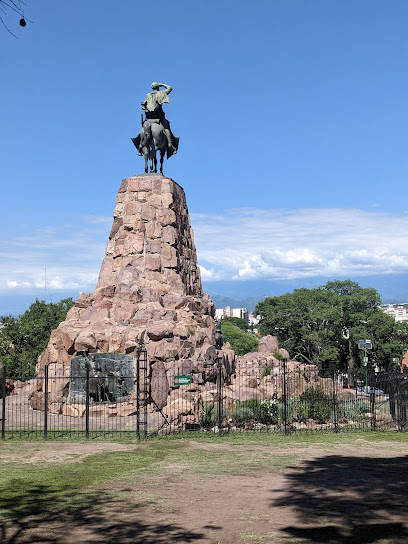
Quebrada de San Lorenzo
Explore the stunning Quebrada de San Lorenzo in Salta, Argentina - a hiker's paradise filled with breathtaking landscapes and rich biodiversity.
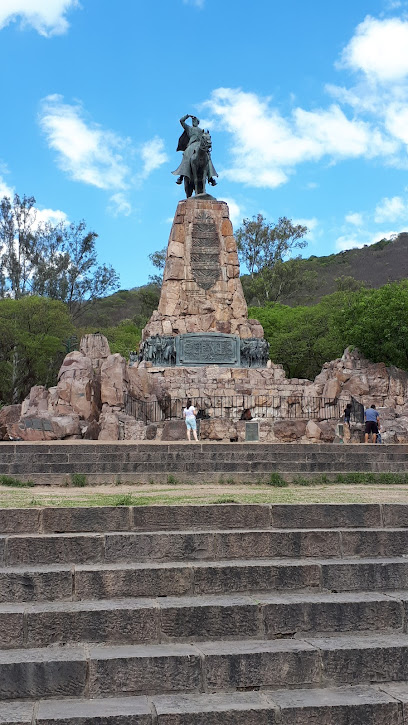
Museum of High Altitude Archaeology
Discover the ancient wonders of the Andes at the Museum of High Altitude Archaeology in Salta, Argentina – a cultural gem for all travelers.

Catedral Basílica de Salta
Discover the architectural beauty and spiritual tranquility of Catedral Basílica de Salta, a must-visit landmark in Argentina's breathtaking northern region.
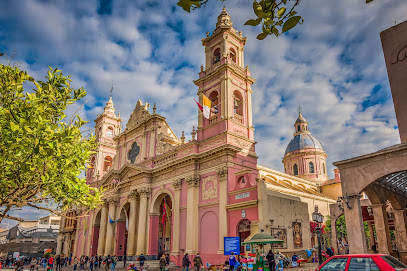
Plaza Belgrano
Discover the vibrant heart of Salta at Plaza Belgrano, where lush greenery meets rich cultural heritage and lively local events.
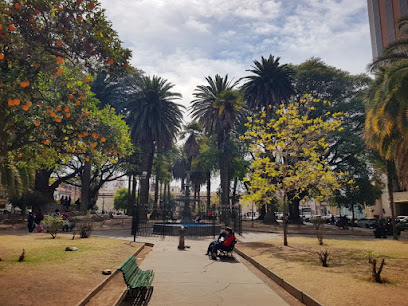
Plaza Gral. Don Martin Miguel de Guemes
Explore Plaza Gral. Don Martin Miguel de Guemes, a serene park and monument in Salta, rich in history and vibrant local culture, perfect for relaxation and exploration.
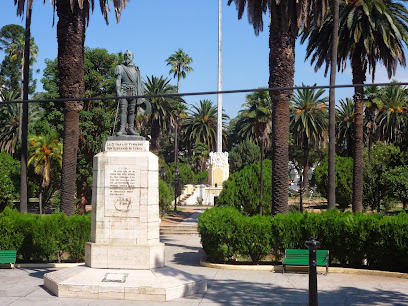
IGLESIA Y MUSEO SAN FRANCISCO
Explore the architectural beauty and rich history of Iglesia y Museo San Francisco, a captivating Catholic church and museum in Salta, Argentina.
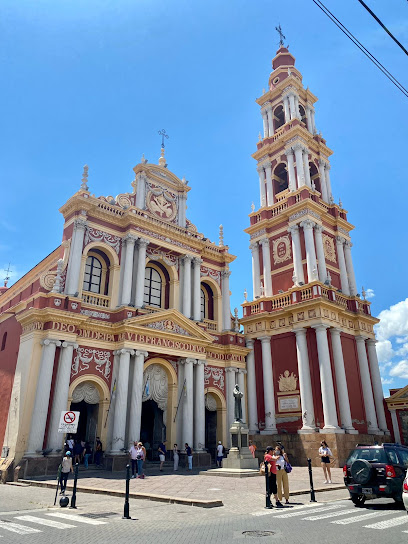
20 de Febrero Monument
Discover the 20 de Febrero Monument in Salta, Argentina: A stunning tribute to history surrounded by beautiful gardens, perfect for travelers seeking cultural enrichment.
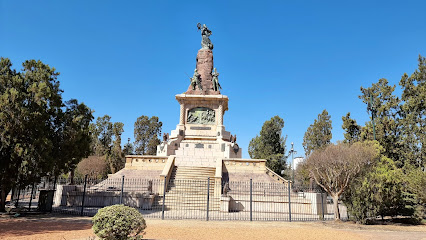
History Museum of the North
Explore the rich history and vibrant culture of northern Argentina at the History Museum of the North in Salta, a must-visit destination for every traveler.
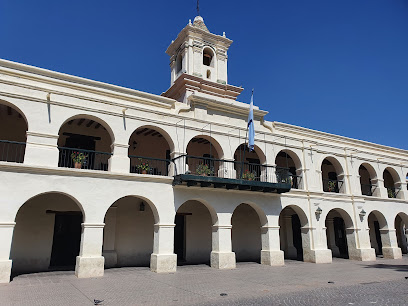
Parada Norte Turismo
Discover the beauty and culture of Salta, Argentina with Parada Norte Turismo - your expert travel agency for unforgettable adventures.
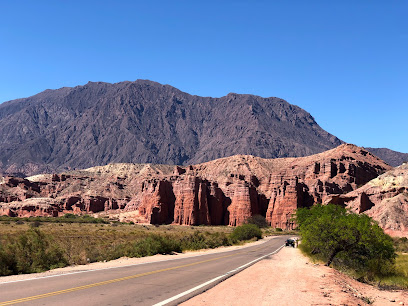
Virgen de los tres cerritos - Salta
Explore the serene Virgen de los Tres Cerritos in Salta, a stunning sanctuary offering breathtaking views and a peaceful atmosphere for reflection.

Unmissable attractions to see
San Bernardo's Hill
Discover stunning views and vibrant nature at San Bernardo's Hill, a premier hiking destination in Salta, Argentina.
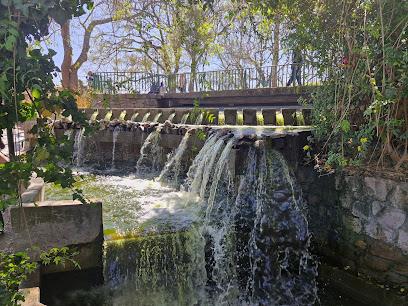
San Martin Park
Explore the beauty of San Martin Park in Salta, a serene escape filled with lush greenery, cultural monuments, and tranquil lakes for an unforgettable experience.
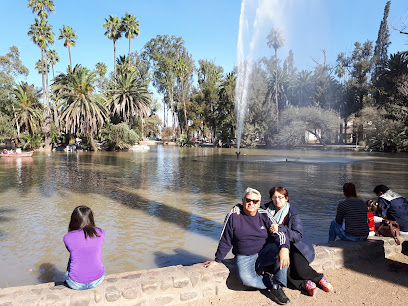
San Lorenzo Ravine
Explore San Lorenzo Ravine, a stunning hiking area in Salta Province that captivates with its natural beauty and diverse wildlife.
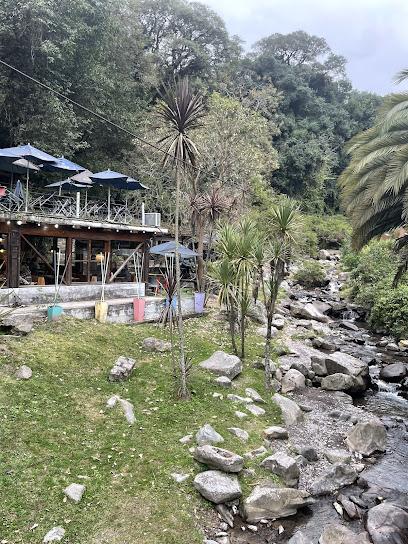
Museum of High Altitude Archaeology
Discover the ancient wonders of the Andes at the Museum of High Altitude Archaeology in Salta, a fascinating journey into the past.
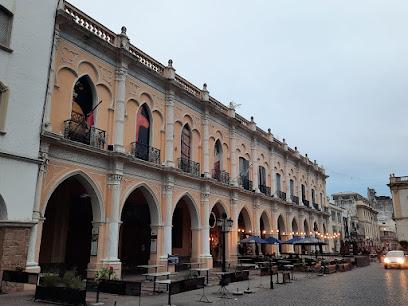
Garganta del Diablo
Explore the breathtaking beauty of Garganta del Diablo in Salta Province, Argentina, where nature's power and serenity converge in a stunning landscape.
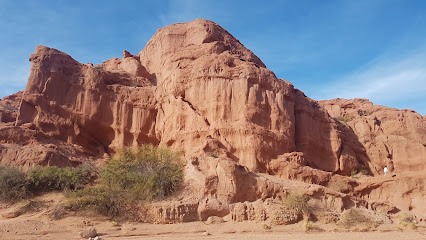
Catedral Basílica de Salta
Discover the beauty and history of the Catedral Basílica de Salta, a stunning architectural gem in Argentina's cultural heart.
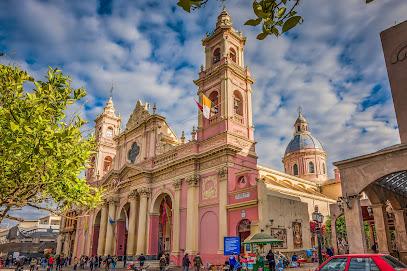
Plaza Belgrano
Discover the vibrant Plaza Belgrano in Salta, a cultural hub with lush greenery, historic architecture, and lively local events.
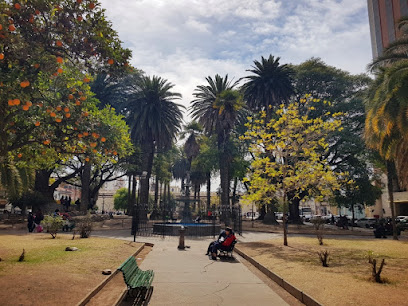
IGLESIA Y MUSEO SAN FRANCISCO
Explore the stunning Iglesia y Museo San Francisco in Salta, a vibrant cultural landmark blending history, art, and spirituality.
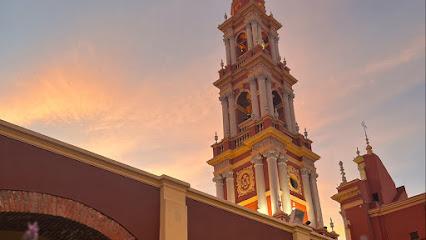
Nordic Travel EVT
Experience the best of Salta with Nordic Travel EVT, your trusted partner for unforgettable Argentine sightseeing adventures.
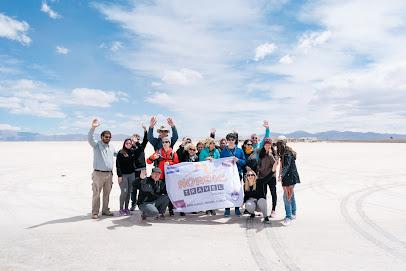
Parque Nacional los Cardones
Discover the breathtaking landscapes and diverse wildlife at Parque Nacional los Cardones, a stunning national park in Salta Province, Argentina.
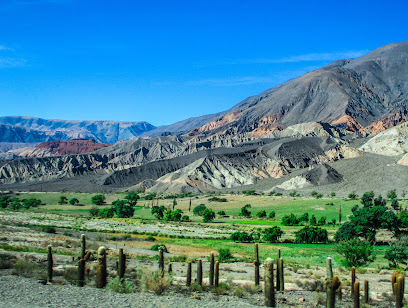
Walk Cerro San Bernardo entrance
Discover the breathtaking views and natural beauty of Walk Cerro San Bernardo in Salta, Argentina, a must-visit destination for nature lovers.

Walk Cerro San Bernardo entrance
Discover stunning views and nature's beauty at Cerro San Bernardo, an iconic attraction in Salta, Argentina, perfect for outdoor enthusiasts and families alike.
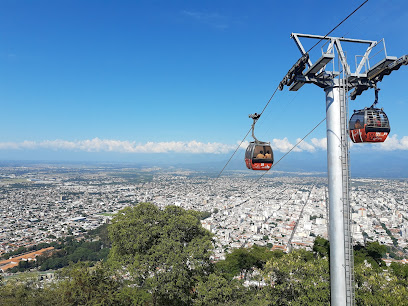
History Museum of the North
Explore the captivating history of Salta at the History Museum of the North, where rich cultural heritage meets engaging exhibits.
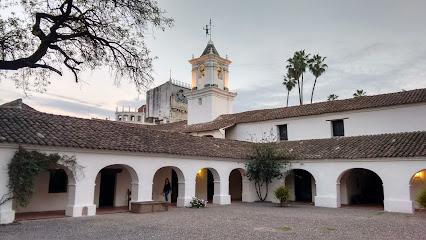
Municipal Reserve Yungas De San Lorenzo
Explore the lush landscapes and diverse wildlife of Municipal Reserve Yungas De San Lorenzo, a tranquil retreat in Salta Province perfect for hiking enthusiasts.
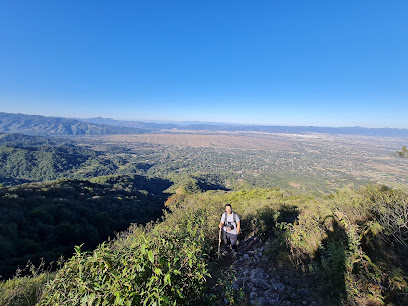
Shells' Ravine
Experience the breathtaking beauty of Shells' Ravine in Cafayate, where vibrant landscapes and exhilarating hiking await nature lovers and adventurers.

Essential places to dine
Doña Salta
Discover authentic Argentinian cuisine at Doña Salta, where traditional flavors meet warm hospitality in the heart of Salta.
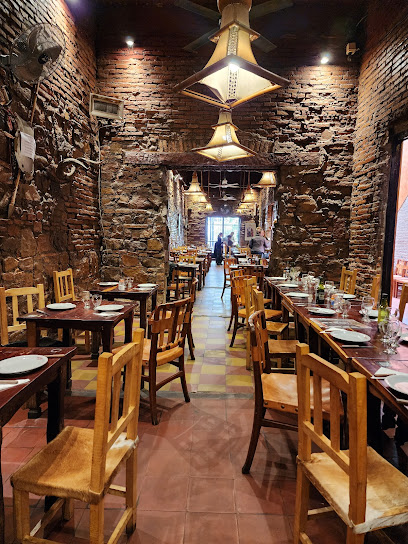
La Casona del Molino
Discover authentic Creole cuisine at La Casona del Molino in Salta - a culinary experience that celebrates Argentina's rich flavors and traditions.
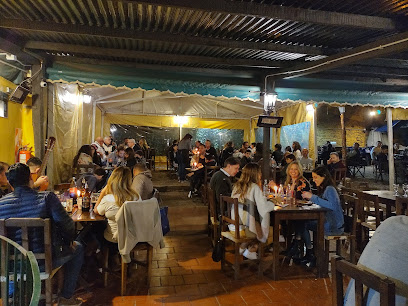
Peña La Vieja Estación
Discover authentic Argentine cuisine at Peña La Vieja Estación, a vibrant gastropub offering delicious local flavors and live music in Salta.
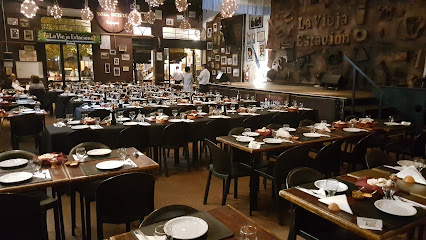
La Nueva Mega Peña La Panadería del Chuña
Discover authentic Argentinian cuisine at La Nueva Mega Peña La Panadería del Chuña – where flavor meets culture in Salta.
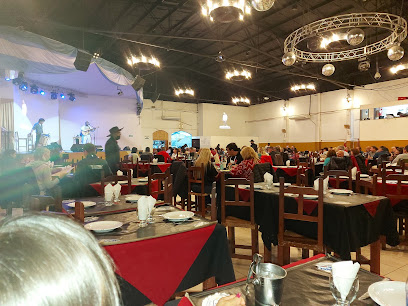
El Charrúa Restaurante y Parrillada
Experience authentic Argentinian cuisine at El Charrúa Restaurante y Parrillada - where every meal is a celebration of flavor.
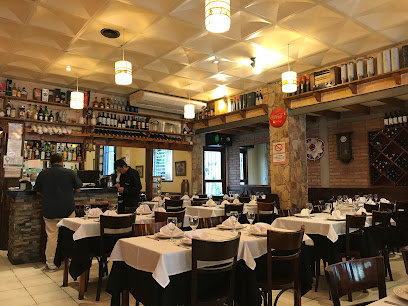
Trattoria Mamma Mia
Discover authentic Italian flavors at Trattoria Mamma Mia in Salta – where tradition meets taste in every dish.
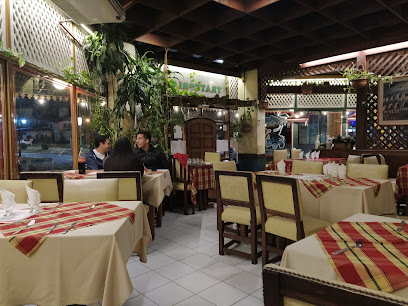
El Charrúa (Paseo Güemes)
Discover the essence of Argentinian cuisine at El Charrúa in Salta - where flavor meets tradition in every bite.
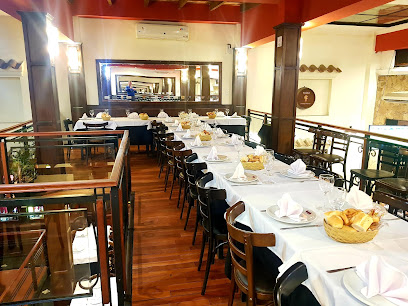
Rith Themed Restobar
Discover Rith Themed Restobar in Salta: A delightful grill experience blending local flavors with a vibrant atmosphere.
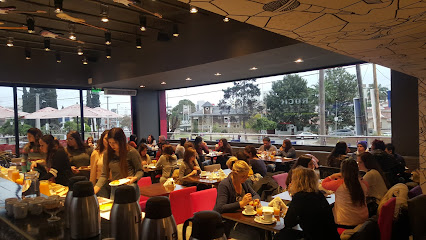
Ciudad Güemes
Experience authentic Argentine cuisine at Ciudad Güemes in Salta—where flavorful grilled meats meet warm hospitality.

Jovi Dos
Experience authentic Argentine cuisine at Jovi Dos, where every dish tells a story in the heart of Salta's vibrant dining scene.
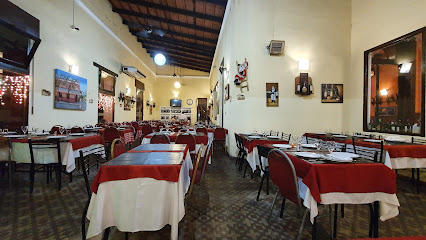
Café del Tiempo
Discover the vibrant culinary scene at Café del Tiempo in Salta – where local flavors meet international flair in an inviting atmosphere.
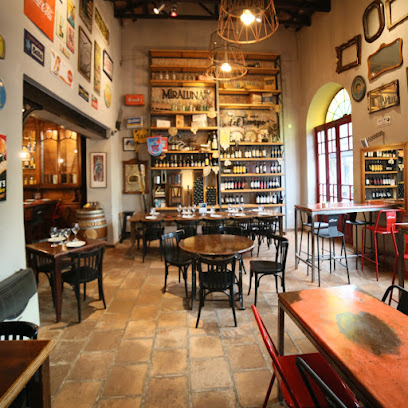
Patio De La Empanada
Experience authentic Argentinian cuisine at Patio De La Empanada in Salta - home to delicious handmade empanadas and local delicacies.

Viejo Jack II Parrilla
Experience authentic Argentinian cuisine at Viejo Jack II Parrilla in Salta – where every meal is a celebration of flavor.
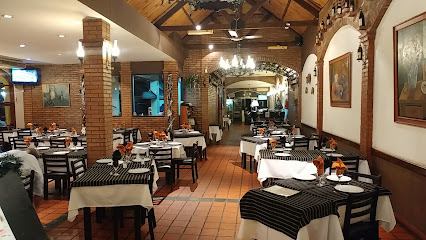
Van Gogh Café
Discover Van Gogh Café: A delightful fusion of art and culinary excellence in the heart of Salta.
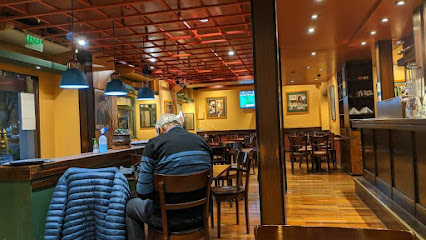
Aires Caseros - Cocina Regional
Discover authentic Argentine flavors at Aires Caseros - where regional cuisine meets warm hospitality in the heart of Salta.
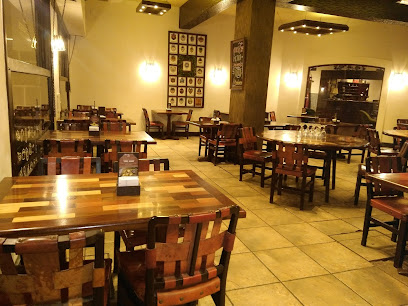
Markets, malls and hidden boutiques
Alto NOA Shopping
Experience the best of shopping and dining at Alto NOA Shopping in Salta, a vibrant hub for fashion, food, and fun.
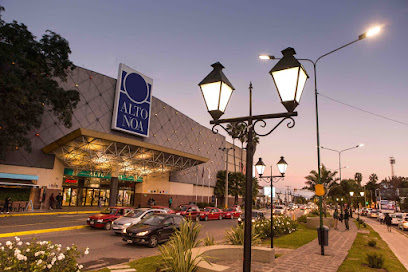
Paseo Libertad
Explore Paseo Libertad in Salta, a vibrant shopping mall with diverse stores, dining options, and a taste of local culture in every corner.
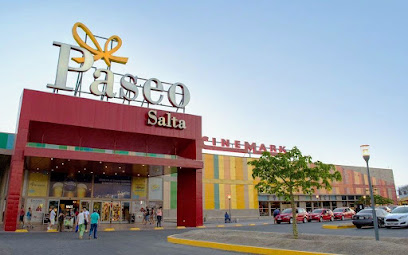
Portal Salta Shopping
Discover the ultimate shopping experience at Portal Salta Shopping Mall, where fashion, dining, and entertainment come together in vibrant Salta, Argentina.
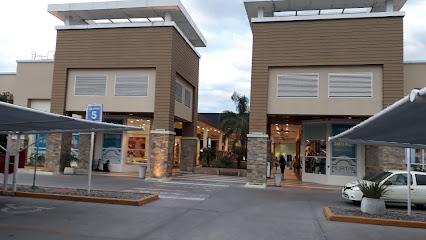
Mercado Artesanal de Salta
Discover the artistic heart of Salta at the Mercado Artesanal, where local crafts and flavors come together in a vibrant shopping experience.
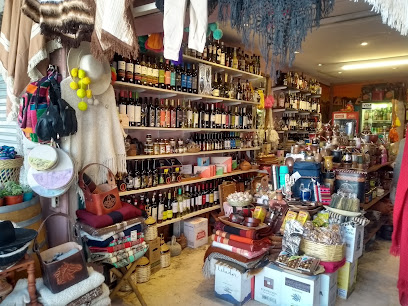
Store San Juan - Salta
Discover stylish clothing and local fashion at Store San Juan, the heart of Salta's shopping scene, where tradition meets modernity.
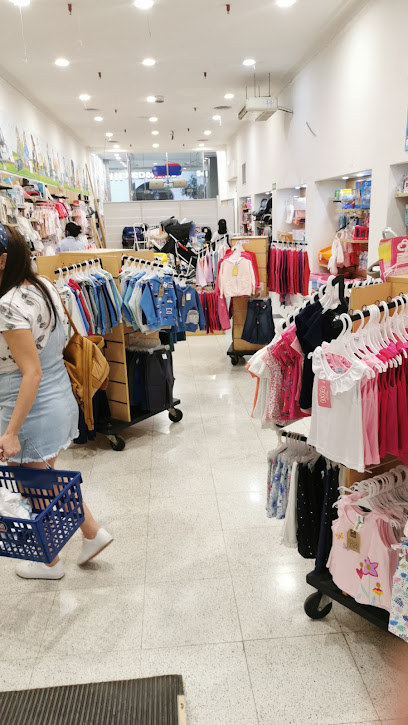
El Palacio Galerías
Discover shopping bliss at El Palacio Galerías in Salta, where culture meets modern retail in a vibrant setting.

Shopping Salta
Discover the essence of Salta's shopping experience at Shopping Salta, a vibrant mall offering diverse shops, delicious food, and entertainment for everyone.
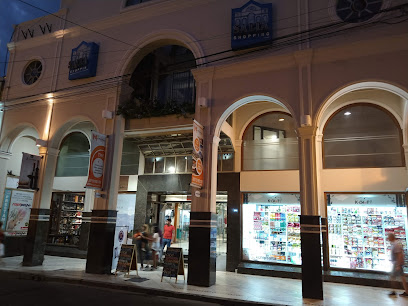
Salta Gallery Shop
Discover local crafts, fashion, and delicious cuisine at Salta Gallery Shop in the heart of Salta's vibrant Centro district.
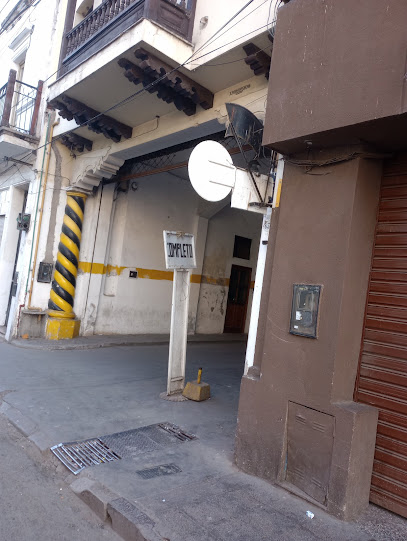
Tienda kintsugi
Tienda Kintsugi: A vibrant gift shop in Salta, blending culture, anime, and delicious Japanese treats for an unforgettable experience.

Gift Indumentaria
Explore the vibrant fashion scene at Gift Indumentaria in Salta, where local craftsmanship meets contemporary style for an unforgettable shopping experience.
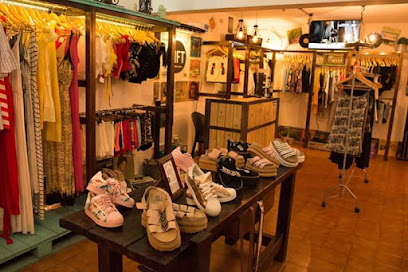
Montagne
Explore the great outdoors with top-quality gear and clothing from Montagne in Salta, where adventure awaits.

The Regional Linda Salta
Explore the vibrant spirit of Salta at The Regional Linda Salta, a quaint souvenir store within Mercado San Miguel, perfect for unique local finds.
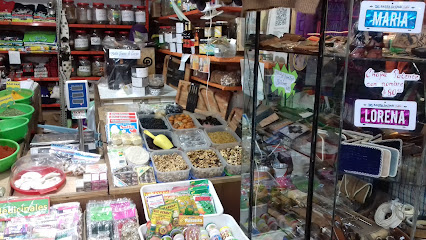
CasaLinda! Home Shop
Explore CasaLinda! Home Shop in Salta for unique gifts, home goods, and local craftsmanship that captures the spirit of Argentina.
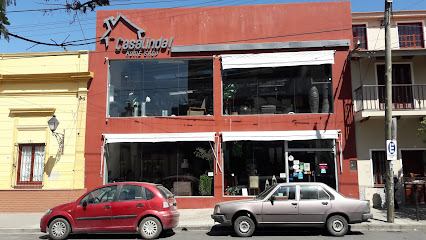
Almandina Salta
Discover unique Argentine gifts at Almandina Salta, where local artistry and culture come together in a charming gift shop experience.
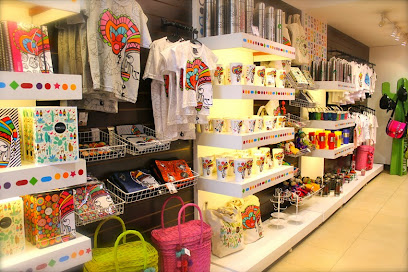
Tienda La Fortuna
Explore Tienda La Fortuna in Salta for unique boots, hats, and men's clothing that reflect the vibrant Argentine culture and craftsmanship.
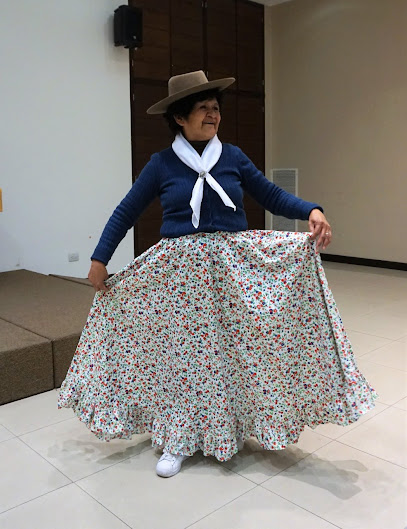
Essential bars & hidden hideouts
Temple Craft Salta
Discover the vibrant craft beer scene at Temple Craft Salta, where local brews and delicious cuisine meet in a lively atmosphere.
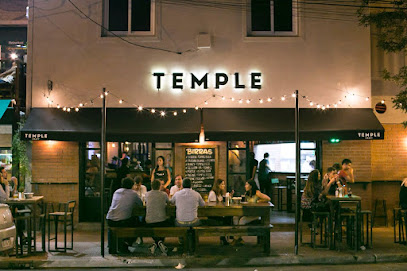
La Birrería Salta
Discover La Birrería Salta, a vibrant brewpub offering an exquisite selection of craft beers and a lively atmosphere in the heart of Salta, Argentina.
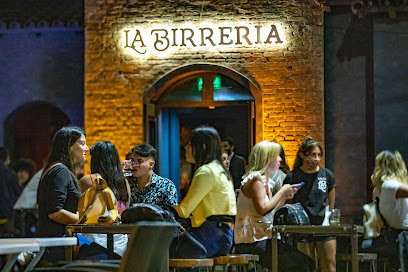
Amnesia Pub&Music
Discover the vibrant nightlife of Salta at Amnesia Pub&Music, where great food, dynamic music, and unforgettable moments await you.
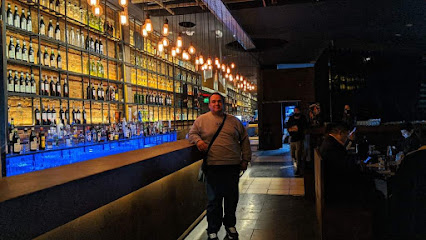
Insomnia Bar & Pub
Experience the vibrant nightlife at Insomnia Bar & Pub in Salta, where local charm meets a lively atmosphere and delicious drinks.
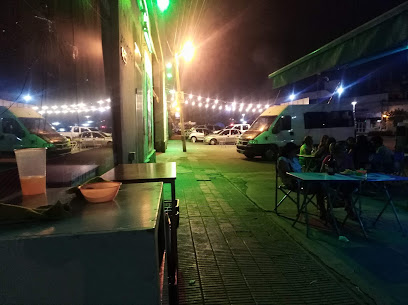
Zeppelin Resto Bar Salta
Discover the vibrant Zeppelin Resto Bar in Salta, a perfect blend of delicious grills, cocktails, and an unforgettable nightlife experience.
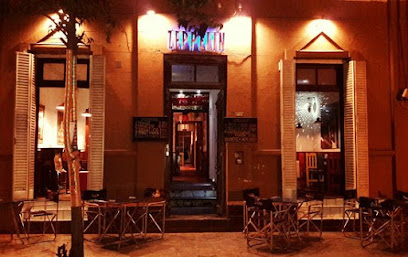
Bar Mac
Experience the vibrant nightlife of Salta at Bar Mac, where great drinks, local flavors, and a lively atmosphere await you.
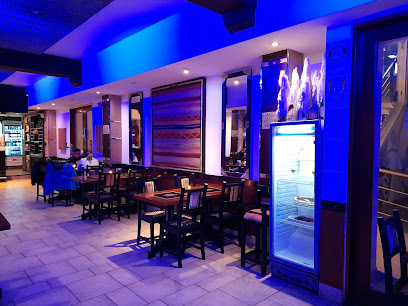
Macondo Bar
Discover the vibrant nightlife of Salta at Macondo Bar, where creative cocktails meet a lively atmosphere for an unforgettable experience.

Rata Bar
Experience the vibrant nightlife of Salta at Rata Bar, a lively destination for cocktails, music, and unforgettable memories.
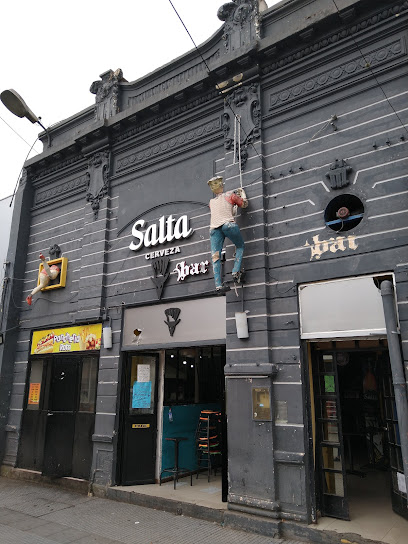
Glou Gintoneria
Experience Salta’s vibrant nightlife at Glou Gintoneria, where exquisite gins and lively ambiance meet for an unforgettable evening.
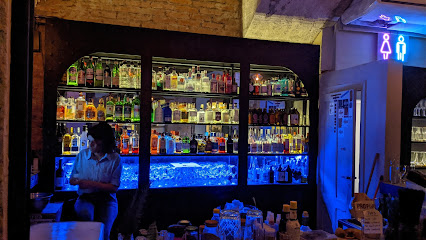
Bruto Craft Bar
Experience the vibrant nightlife and craft beer selection at Bruto Craft Bar, the heart of Salta's social scene.
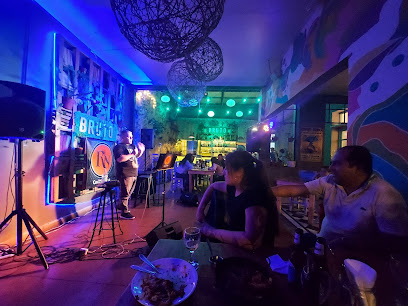
BEMBÉ
Experience the vibrant nightlife of Salta at BEMBÉ, where local culture blends seamlessly with a lively bar atmosphere.
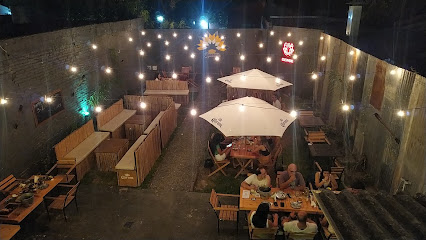
Zumo Bar
Experience the vibrant flavors of Argentine grilling at Zumo Bar, a must-visit spot in the heart of Salta.
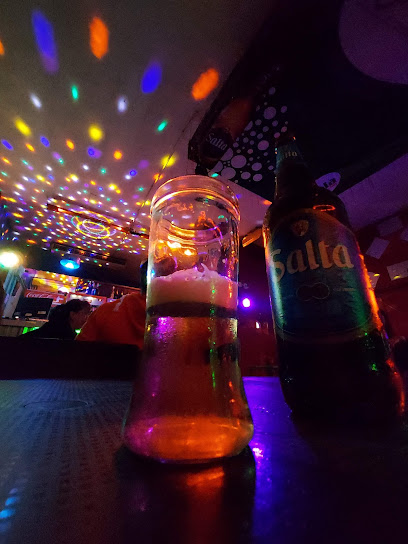
Delirio Bar
Experience vibrant nightlife at Delirio Bar in Salta, where local culture meets diverse drinks and lively entertainment.
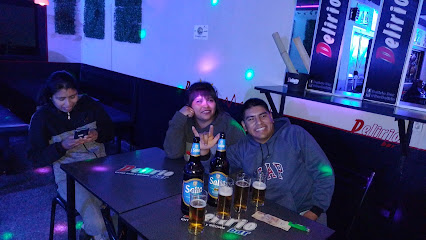
Bourbon Bar Salta
Experience the vibrant nightlife of Salta at Bourbon Bar, where delicious cocktails and a lively atmosphere create unforgettable nights.
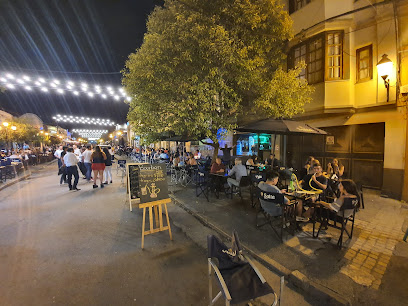
JAGGER HOUSE
Experience the vibrant nightlife of Salta at Jagger House, a lively pub offering a unique blend of drinks and local music.
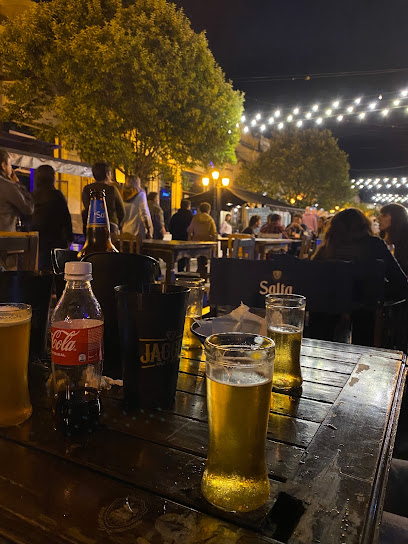
Travel experiences inspired by this city
Explore more travel diariesLocal Phrases
-
- HelloHola
[oh-lah] - GoodbyeChau
[chow] - YesSí
[see] - NoNo
[noh] - Please/You're welcomePor favor/De nada
[por fah-bor/deh nah-dah] - Thank youGracias
[grah-see-as] - Excuse me/SorryDisculpe/Perdón
[dee-skool-peh/pehr-dohn] - How are you?¿Cómo estás?
[koh-moh ess-tahs] - Fine. And you?Bien. ¿Y tú?
[byen. ee too] - Do you speak English?¿Hablas inglés?
[ah-blahs een-glehs] - I don't understandNo entiendo
[noh ehn-tee-ehn-doh]
- HelloHola
-
- I'd like to see the menu, pleaseMe gustaría ver el menú, por favor
[meh goos-tah-ree-ah vehr ehl meh-noo, por fah-bor] - I don't eat meatNo como carne
[noh koh-moh kahr-neh] - Cheers!Salud!
[sah-lood] - I would like to pay, pleaseMe gustaría pagar, por favor
[meh goos-tah-ree-ah pah-gahr, por fah-bor]
- I'd like to see the menu, pleaseMe gustaría ver el menú, por favor
-
- Help!¡Ayuda!
[ah-yoo-dah] - Go away!¡Vete!
[veh-teh] - Call the Police!¡Llama a la policía!
[yah-mah ah lah poh-lee-see-ah] - Call a doctor!¡Llama a un médico!
[yah-mah ah oon meh-dee-koh] - I'm lostEstoy perdido
[ess-toy pehr-dee-doh] - I'm illEstoy enfermo
[ess-toy ehn-fehr-moh]
- Help!¡Ayuda!
-
- I'd like to buy...Quisiera comprar...
[kee-see-eh-rah kohm-prahr] - I'm just lookingSolo estoy mirando
[soh-loh ess-toy meer-ahn-doh] - How much is it?¿Cuánto cuesta?
[kwahn-toh kwehs-tah] - That's too expensiveEsto es muy caro
[ehs-toh ehs moo-ee kahr-oh] - Can you lower the price?¿Puede bajar el precio?
[pweh-deh bah-har ehl pree-syoh]
- I'd like to buy...Quisiera comprar...
-
- What time is it?¿Qué hora es?
[keh oh-rah ehs] - It's one o'clockEs la una
[ehs lah oo-nah] - Half past (10)Media (10)
[meh-dee-ah (diez)] - MorningMañana
[mah-nyah-nah] - AfternoonTarde
[tahr-deh] - EveningNoche
[noh-cheh] - YesterdayAyer
[ah-yehr] - TodayHoy
[oy] - TomorrowMañana
[mah-nyah-nah] - 1Uno
[oo-noh] - 2Dos
[dohs] - 3Tres
[trehs] - 4Cuatro
[kwah-troh] - 5Cinco
[seen-koh] - 6Seis
[says] - 7Siete
[syeh-teh] - 8Ocho
[oh-choh] - 9Nueve
[nweh-veh] - 10Diez
[dee-ehs]
- What time is it?¿Qué hora es?
-
- Where's a/the...?¿Dónde está...?
[dohn-deh ehs-tah] - What's the address?¿Cuál es la dirección?
[kwahl ehs lah dee-rehk-syohn] - Can you show me (on the map)?¿Puede mostrarme (en el mapa)?
[pweh-deh mohs-trar-meh (ehn ehl mah-pah)] - When's the next (bus)?¿Cuándo es el próximo (colectivo)?
[kwahn-doh ehs ehl proh-ksee-moh (koh-lehk-tee-voh)] - A ticket (to ....)Un boleto (a ...)
[oon boh-leh-toh (ah ...)]
- Where's a/the...?¿Dónde está...?
History of Salta
-
Salta was founded on April 16, 1582, by Spanish conquistador Hernando de Lerma. The city was established as a strategic point for the Spanish Empire, serving as a link between Lima, Peru, and Buenos Aires. Its location in the Lerma Valley made it a vital hub for trade and communication.
-
On February 20, 1813, the Battle of Salta took place during the Argentine War of Independence. General Manuel Belgrano led the patriot forces to a decisive victory against the Spanish royalists, securing Salta as a stronghold for the independence movement in the region.
-
Salta is renowned for its well-preserved colonial architecture, which reflects its rich history. Notable structures include the Cabildo, the Cathedral Basilica of Salta, and the San Francisco Church. These buildings offer a glimpse into the city's past and its importance during the colonial era.
-
The Train to the Clouds, or Tren a las Nubes, is a marvel of engineering that connects Salta with the high plains of the Andes. Originally constructed in the 1920s, this railway line climbs to over 4,200 meters (13,800 feet) above sea level, offering breathtaking views and a testament to human ingenuity.
-
Salta and its surrounding areas are home to a rich tapestry of indigenous cultures, including the Diaguita and Calchaquí peoples. These cultures have left a lasting legacy through their art, traditions, and archaeological sites, such as the ancient city of Tastil and the Pucará de Tilcara fortress.
-
The gaucho culture is an integral part of Salta’s identity. Gauchos are skilled horsemen known for their distinctive clothing and way of life, which revolves around cattle ranching and rural traditions. The annual Gaucho Festival in Salta is a vibrant celebration of this enduring heritage.
-
The Calchaquí Valleys near Salta are famous for their high-altitude vineyards, producing some of Argentina's finest wines. The region is particularly known for its Torrontés, a white wine grape that thrives in the unique climate and soil conditions. Salta's wine industry is a key aspect of its cultural and economic life.
-
The Museum of High Altitude Archaeology in Salta houses the well-preserved mummies of three Inca children discovered at the summit of Mount Llullaillaco. These mummies, known as the Children of Llullaillaco, provide an extraordinary insight into Inca rituals and the civilization’s presence in the region.
Salta Essentials
-
Salta is accessible via Martín Miguel de Güemes International Airport (SLA), located about 10 kilometers southwest of the city center. Direct flights are available from major cities in Argentina, such as Buenos Aires, Córdoba, and Mendoza. International flights may require a connection through Buenos Aires. Alternatively, Salta is well-connected by bus and train services from various parts of Argentina, though bus travel is more common and reliable. The journey from Buenos Aires by bus takes approximately 20 hours.
-
Salta has a reliable public transportation system, including buses and taxis. The local bus network covers most areas of the city and surrounding regions. Taxis are plentiful and relatively inexpensive; they can be hailed on the street or booked through apps. For exploring the outskirts and nearby attractions, renting a car is advisable. Bicycle rentals are also available for those who prefer a more eco-friendly mode of transport.
-
The official currency in Argentina is the Argentine Peso (ARS). Credit and debit cards are widely accepted in hotels, restaurants, and shops in Salta, but it's a good idea to carry some cash for smaller establishments and markets. ATMs are available throughout the city, but international withdrawal fees can be high, so plan accordingly. Currency exchange services are available at banks and exchange bureaus.
-
Salta is generally a safe city for tourists, but it is important to take standard precautions. Avoid walking alone at night in poorly lit areas and be cautious with your belongings in crowded places. Areas such as the bus terminal and certain neighborhoods like Villa San Antonio and Villa Juanita have higher crime rates and should be avoided, especially after dark. Always use reputable taxi services and avoid displaying valuables.
-
In case of emergency, dial 911 for immediate assistance. Police, fire, and medical services are all accessible through this number. Major hospitals in Salta include Hospital San Bernardo and Hospital Público Materno Infantil. It is advisable to have travel insurance that covers medical emergencies. Pharmacies are widely available for minor health issues and over-the-counter medications.
-
Fashion: Do wear comfortable but modest clothing, especially when visiting religious sites. Avoid overly revealing outfits. Religion: Do respect local religious practices and dress codes, particularly in churches and during religious festivals. Public Transport: Do have small change for bus fares and be respectful of fellow passengers. Don't eat or drink on public transport. Greetings: Do greet people with a handshake or a kiss on the cheek, which is common in Argentina. Eating & Drinking: Do try local specialties like empanadas and humitas. Don't refuse an offer of mate, a traditional tea, as it is considered impolite.
-
To experience Salta like a local, visit the Mercado San Miguel to enjoy local produce and traditional foods. Engage with locals in the city’s many plazas, such as Plaza 9 de Julio, where you can enjoy cafés and street performances. Take a ride on the Tren a las Nubes (Train to the Clouds) for stunning views of the Andes. Don’t miss the chance to explore the Calchaquí Valleys and the town of Cafayate, known for its wineries and scenic beauty.
Trending Landmark in Salta
-
July 9th Square
-
San Bernardo's Hill
-
San Martin Park
-
Mercado Municipal San Miguel
-
Monument General Martin Miguel de Guemes
-
Quebrada de San Lorenzo
-
Museum of High Altitude Archaeology
-
Catedral Basílica de Salta
-
Plaza Belgrano
-
Plaza Gral. Don Martin Miguel de Guemes
-
IGLESIA Y MUSEO SAN FRANCISCO
-
20 de Febrero Monument
-
History Museum of the North
-
Parada Norte Turismo
-
Virgen de los tres cerritos - Salta
Nearby Cities to Salta
-
Things To Do in San Miguel de Tucumán
-
Things To Do in San Pedro de Atacama
-
Things To Do in Tarija
-
Things To Do in Uyuni
-
Things To Do in Antofagasta
-
Things To Do in Potosi
-
Things To Do in Sucre
-
Things To Do in Iquique
-
Things To Do in Córdoba
-
Things To Do in Asuncion
-
Things To Do in Aregua
-
Things To Do in La Serena
-
Things To Do in Santa Cruz de la Sierra
-
Things To Do in San Juan
-
Things To Do in Coquimbo





